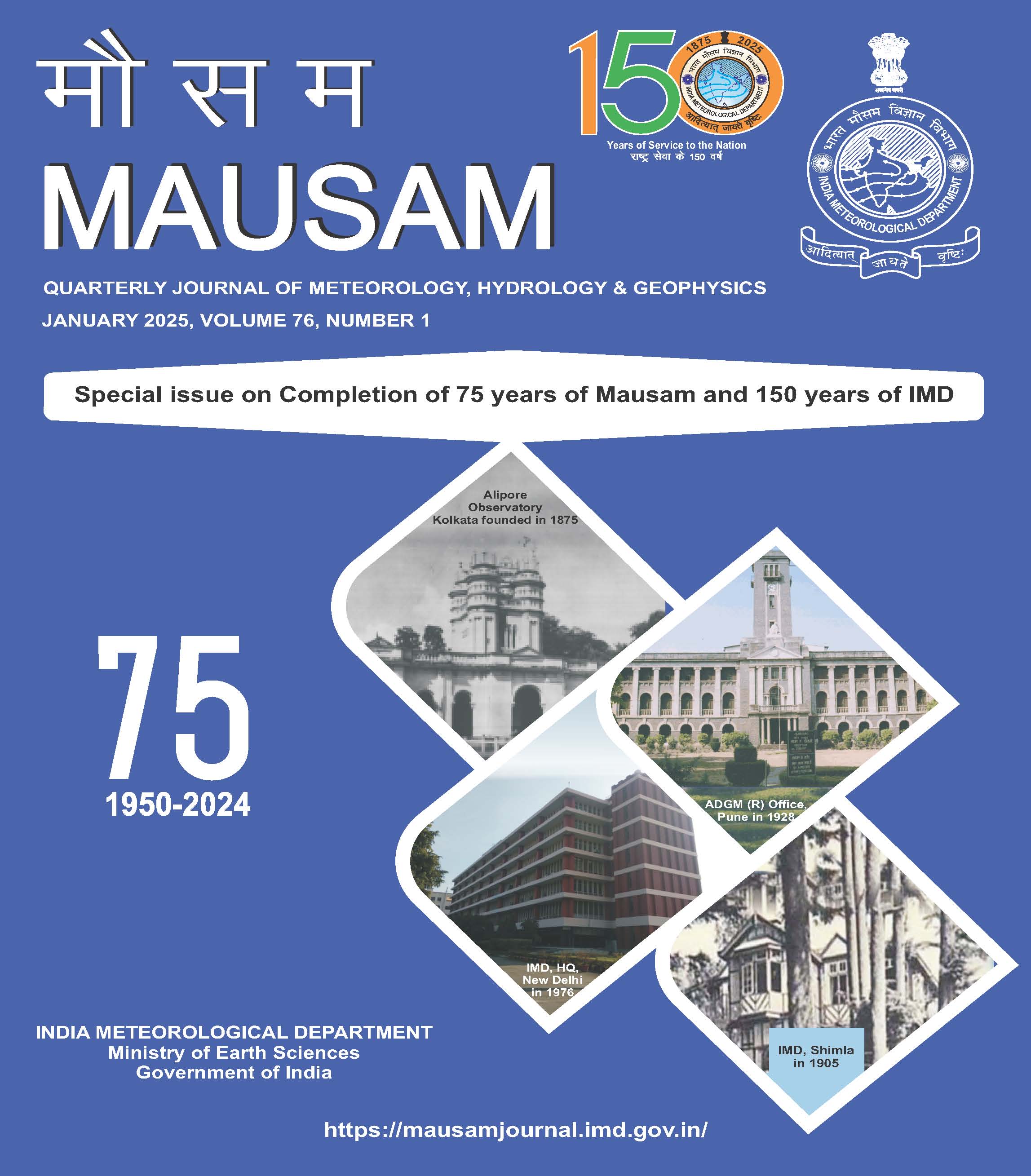India Meteorological Department: A journey of 40-Year of polar meteorology
DOI:
https://doi.org/10.54302/mausam.v76i1.6473Keywords:
Polar Meteorology, Antarctica, Climate Research, Extreme Weather Events, Climate Change and OzoneAbstract
The multi-disciplinary and multi-institutional scientific expedition to Antarctica of national and global relevance was initiated by India for the first time in 1981. India Meteorological Department (IMD) started meteorological observations since the very first expedition. The extensive meteorological observations collected from Dakshin Gangotri (70.75oS 11.58oE), Maitri (70.76oS 11.73oE) and Bharati (69.4oS 75.18oE) stations provide a comprehensive overview of the Antarctic climate over the past four decades.
The paper highlights the significance of polar meteorology within the broader context of climate science. It provides an overview of IMD's involvement in setting up and maintaining meteorological infrastructure at the aforementioned polar stations, emphasizing the challenges and achievements associated with continuous data collection in these extreme environments. The analysis includes a range of meteorological variables, including temperature, precipitation, wind patterns, solar radiation and atmospheric ozone.
Downloads
Published
How to Cite
Issue
Section
License
Copyright (c) 2025 MAUSAM

This work is licensed under a Creative Commons Attribution-NonCommercial 4.0 International License.
All articles published by MAUSAM are licensed under the Creative Commons Attribution 4.0 International License. This permits anyone.
Anyone is free:
- To Share - to copy, distribute and transmit the work
- To Remix - to adapt the work.
Under the following conditions:
- Share - copy and redistribute the material in any medium or format
- Adapt - remix, transform, and build upon the material for any purpose, even
commercially.



